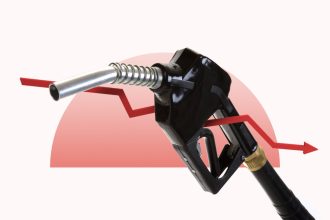Sometimes, two seemingly incongruous things can be true at the same time. For example, it’s true that U.S. homeowners have amassed an extraordinary amount of home equity these days — roughly $34.5 trillion. And according to ATTOM’s most recent home equity report, more than 47 percent of homeowners are “equity rich,” meaning that their homes are worth at least twice as much as they still owe on their mortgage.
At the same time, it’s also true that U.S. consumers have amassed a record amount of debt — $18.4 trillion at the end of the second quarter of 2025, according to a report from the Federal Reserve Bank of New York. Balances on auto loans, student loans and credit cards are all at or near historically high levels, even as interest rates have climbed, making that debt much more expensive to pay down.
Logically, a population with a record amount of equity might tap into those funds to pay down this record amount of debt.
More troubling, the same report notes that delinquency rates on consumer credit payments have increased in nine of the past 10 quarters, and serious delinquencies — loans where payments are 90 or more days past due — are growing rapidly.
Logically, it would seem that a population with a record amount of equity might tap into some of those funds, if they can, to pay down this record amount of debt. Especially since mortgage rates have recently come down into the low 6 percent range, while the average interest rate on a credit card is over 20 percent. But is that really the best solution?
Traditional ways to access home equity
Historically, homeowners have tapped into home equity for a variety of reasons: making home improvements, funding higher education, investing in a second home, paying down higher-priced debt. The two most common ways of leveraging this equity have been home equity loans and home equity lines of credit (HELOCs).
These products sound very similar, and in some ways, they are. But there are some fundamental and important differences between the two. According to the Consumer Financial Protection Bureau:
-
A home equity loan is “a specific amount of money borrowed against the equity of your home.” These loans are relatively straightforward in that borrowers receive their funds in a lump sum and pay them back monthly, typically at a fixed interest rate.
-
A HELOC, on the other hand, “is a line of credit, like a credit card, except you are borrowing against the equity of your home.” It has a cap on the amount of money that can be borrowed, and as the borrower makes payments against what they’ve used, the amount of available credit is replenished. Monthly payments vary depending on the interest rate (usually adjustable, but they can be fixed) and the outstanding balance.
If you already have a mortgage on your home, both of these products would be considered second mortgages that you’d need to pay in addition to your first one. The popularity of HELOCs in particular is on the rise: The New York Fed reports that HELOC lending has increased for 13 consecutive quarters, with the total balance of these lines of credit reaching $411 billion at the end of Q2 2025.
What both home equity loans and HELOCs have in common are that they add to the debt load of the borrower and require additional monthly payments. But sometimes — as in the case of debt consolidation — a borrower’s monthly cash output may decline even with this additional payment, because interest rates on these loans is probably lower than the rates on credit cards and other high interest rate debt. Home equity loans are also typically amortized over a much longer time frame, typically about 15 years, reducing the monthly payment amount.
A new approach: Shared equity products
In addition to home equity loans and HELOCs, there’s now a relatively new option for homeowners with at least 20 to 30 percent equity in their homes: home equity investments (HEIs), also known as “shared equity products.” These products offer homeowners the opportunity to get immediate access to the funds they have tied up in home equity, without having to take out a loan — in exchange for a share in the future value of their home.
Jim Riccitelli, the CEO of equity-sharing company Unlock Technologies, explains the differences this way: “Equity loans and HELOCs are based on debt mechanics, which means principal balances, monthly payments, interest rates and amortization. They’re underwritten based on credit and income. HEI products are equity-based — in exchange for a lump sum of cash up front, the homeowner gives the investor the right to share part of the home’s value in the future.”
Borrowers use this product as a way to get their credit score back on track.
— Jim Riccitelli
CEO, Unlock Technologies
According to Riccitelli, equity-sharing products require no monthly payments by the borrower, typically have terms ranging from 10 to 30 years, and in many cases come with a cap on the amount of money the homeowner pays at the end of the term. Since HEI products are based on equity rather than traditional underwriting, which relies heavily on a borrower’s credit score and payment history, they have found early adoption among borrowers who have experienced a temporary financial hardship and become delinquent on their mortgages, often making them ineligible for a home equity loan or HELOC.
“These borrowers use this product as a way to get their credit score back on track,” he says. “When they do, they become eligible for a mortgage loan, then get the mortgage loan to buy us out, and now they’re back on track.”
Shared equity products are not currently regulated, though, and the CFPB advises caution — and a thorough review of contract terms — before entering into an agreement. Some of the potential risks: Repayment amounts may be higher than expected; a homeowner may need to sell their home at the end of the term if they don’t have the cash needed to meet the HEI terms; and repayments are due even if the home has actually lost value over time.
Bottom line: Read the fine print
There have never been more options available to homeowners who might benefit from leveraging their equity than we have today. However, there are pros and cons to using any of these products. Keep in mind that all of them mean reducing the amount of cash that you, as a homeowner, will ultimately take away with the sale of your home — often an important part of retirement plans or a way to pass along intergenerational wealth — so it’s important to proceed cautiously and do your research beforehand.
Why we ask for feedback
Your feedback helps us improve our content and services. It takes less than a minute to
complete.
Your responses are anonymous and will only be used for improving our website.
Help us improve our content
Read the full article here
















